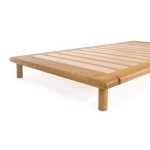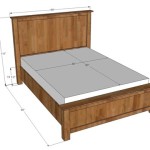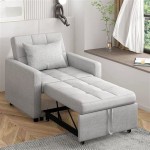Can I Build a Murphy Bed?
The allure of a Murphy bed, a space-saving marvel that transforms from a bed to a wall-mounted furniture piece, is undeniable. But for many, the question remains: can I build a Murphy bed myself? The answer, thankfully, is a resounding yes. While building a Murphy bed is a project best suited for those with some carpentry skills, it is entirely achievable for dedicated DIYers with the right tools and guidance.
Planning and Design
Before embarking on this project, meticulous planning is the key to success. Assess the space where the Murphy bed will be installed, ensuring the dimensions are adequate for the bed and its mechanism to function properly. Consider the desired size of the bed, the type of mattress it will accommodate, and the overall design aesthetic. A well-thought-out plan, complete with detailed measurements and sketches, will provide a roadmap throughout the construction process.
Murphy bed kits are readily available, providing a convenient starting point for builders at any skill level. These kits typically include pre-cut components, hardware, and instructions, often simplifying the construction process. However, for those seeking complete customization, building a Murphy bed from scratch offers greater flexibility in terms of design, materials, and features.
Construction Fundamentals
The foundation of a Murphy bed lies in its sturdy frame. The most common frame design involves two vertical side panels connected by a horizontal base and a top header. The frame must be strong enough to support the weight of the bed and mattress during both the folded and unfolded positions. Selecting high-quality materials, such as plywood or solid wood, is essential to ensure durability and longevity.
The heart of a Murphy bed is its hinge mechanism, which allows it to fold and unfold smoothly. There are various hinge options available, ranging from simple, basic hinges to more complex, self-locking mechanisms. The choice of hinge depends on the size and weight of the bed, as well as personal preference.
The construction process involves carefully assembling the frame, incorporating the hinge mechanism, and ensuring the bed fits securely within the designated wall space. Accurate measurements and precise cutting are paramount to ensure the bed folds and unfolds smoothly without any binding or misalignment.
Additional Considerations
Apart from the basic construction, several other aspects warrant attention to create a functional and aesthetically pleasing Murphy bed.
Finishing Touches
Once the core construction is complete, it's time to add the finishing touches. Painting or staining the bed to match the existing decor is a common practice. Additionally, incorporating storage solutions, such as built-in shelves or drawers, can maximize the functionality of the Murphy bed.
Safety and Functionality
Prioritizing safety is crucial, especially given the weight and movement of the bed. Ensure the hinge mechanism operates smoothly, and the bed is secured to the wall using sturdy brackets. Consider adding safety features such as a locking mechanism to prevent accidental unfolding.
Conclusion
Building a Murphy bed can be a rewarding project, seamlessly blending functionality with aesthetics. While it requires dedication and carpentry skills, the process itself can be immensely fulfilling, ultimately resulting in a custom-made piece that serves as a testament to your creativity and craftsmanship.

Diy Murphy Bed Tutorial And

15 Diy Murphy Beds How To Build A Bed

Diy Murphy Bed Without Expensive Hardware

Diy Horizontal Murphy Bed Woodbrew

Plans A Murphy Bed You Can Build And Afford To Ana White

Diy Murphy Bed How To Easily Build In Just 15 Simple Steps

Diy Murphy Bed Project From A Kit Girl Just

How To Build A Murphy Bed

Diy Murphy Bed Genius Bob Vila

Diy Modern Murphy Bed Huntress







